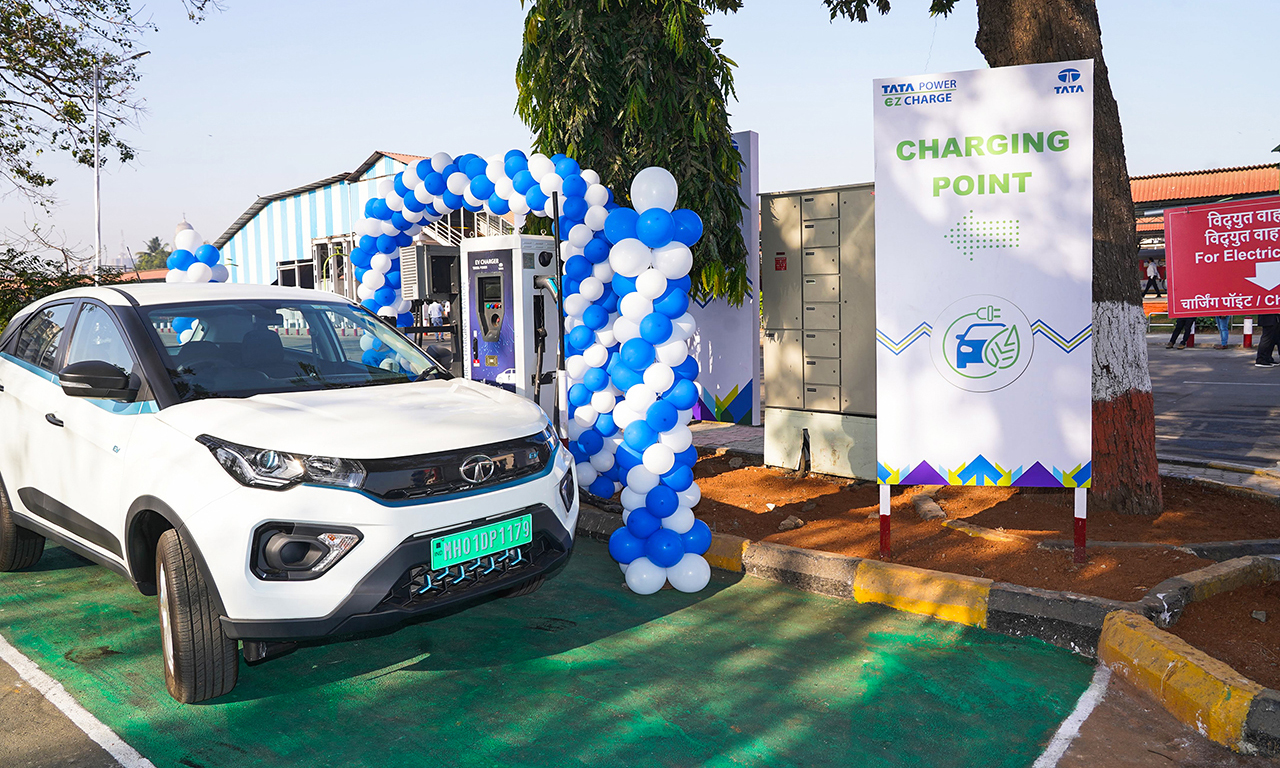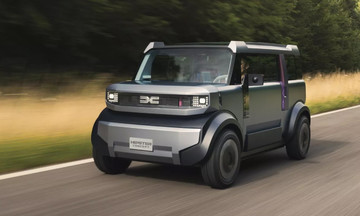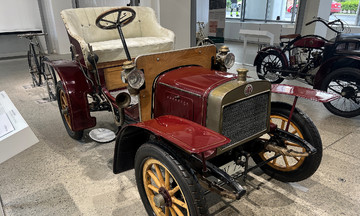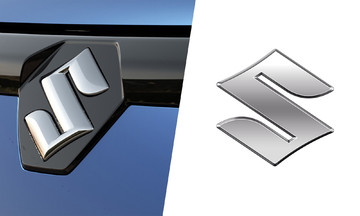Key routes connecting Delhi-Mumbai, Delhi-Kolkata, and Kolkata-Kanyakumari will be upgraded to electric highways (e-highways) under the National Highways for Electric Vehicles (NHEV) program, following a public-private partnership (PPP) model.
Abhijeet Sinha, program director at NHEV, said that while the primary goal is to provide adequate charging infrastructure, the program will also offer roadside assistance for electric vehicles within 30 minutes in case of breakdowns, clean restrooms, and airport-like amenities every 50 km along these routes.
"The 'e' doesn't just stand for electric, but also electronic. With the application and installation of IoT devices as part of a broader Vehicle-to-Everything (V2X) ecosystem, including cameras and sensors, we will be able to improve law enforcement and emergency response through accurate data on vehicle location, speed, and condition," Sinha said.
 |
A Tata Power charging station - currently the top-rated system in India. Photo: Motorindia |
A Tata Power charging station - currently the top-rated system in India. Photo: Motorindia
NHEV will operate through charging stations located at wayside amenity areas (WSAs) on national highways and private land along the routes, spaced 50 km apart. Each station will have two dedicated support vehicles and ambulances to handle incidents within a 25 km radius. Each NHEV station will have a capacity of 3,200 kWh with 36 charging points, an EV service center, restrooms, a food court, a lounge, ATMs, and other commercial amenities such as salons and storage facilities.
"Once these stations are operational, people won't have to rely on individual charging stations, as reliability will be higher and the risk of queuing will be lower," Sinha said.
The first set of stations, totaling eight, will be operational by 3/2026. In addition to serving highway users, Sinha said these stations will also function as logistics hubs.
"All goods meant to be delivered within an 80 km radius can be delivered there for last-mile delivery, and local agricultural produce can be sold at these stations," he added.
Initially, these stations will be powered by the grid, but decentralized, off-grid green energy sources, such as solar, hydrogen, and wind power, will be gradually incorporated in line with India's net-zero emissions target for 2070.
For every 10 stations, three will be owned by public sector power and oil companies, three by private power and oil companies, three by individuals and family-owned businesses, while the state government will own one. The state-owned stations will have a larger area to accommodate an electric bus and truck terminal.
The NHEV director noted that this model will not require any government subsidies, with each station becoming profitable through a combination of revenue streams from various commercial activities, including advertising. "Within 40 months, each station is expected to break even on the initial investment of 40-50 crore rupees (4.6-5.7 million USD), compared to a 40-year break-even period for government-operated charging stations," he said.
EV adoption is central to achieving India's commitment to net-zero emissions by 2070, with road transport estimated to contribute 12% of total emissions. By 2030, India aims for 30% EV penetration for private cars, 70% for commercial vehicles, 40% for buses, and 80% for two- and three-wheelers. However, EV penetration as of the 2025 financial year stands at 7.8%.
As EV use grows, the need for public charging stations becomes critical, particularly for commercial vehicles. Data from the Federation of Automobile Dealers Associations (FADA) shows that EV sales grew by 29% in June compared to the same period in 2024.
According to a July report by CareEdge Analytics and Advisory, there is currently one charging station for every 235 EVs on the road. Underdeveloped charging infrastructure has long been a barrier to EV adoption in India. In contrast, leading global EV markets, such as China and Europe, maintain significantly denser charging networks, with one charging station for every 7-15 EVs, providing greater convenience and reliability for users.
My Anh (Hindustan Times)










